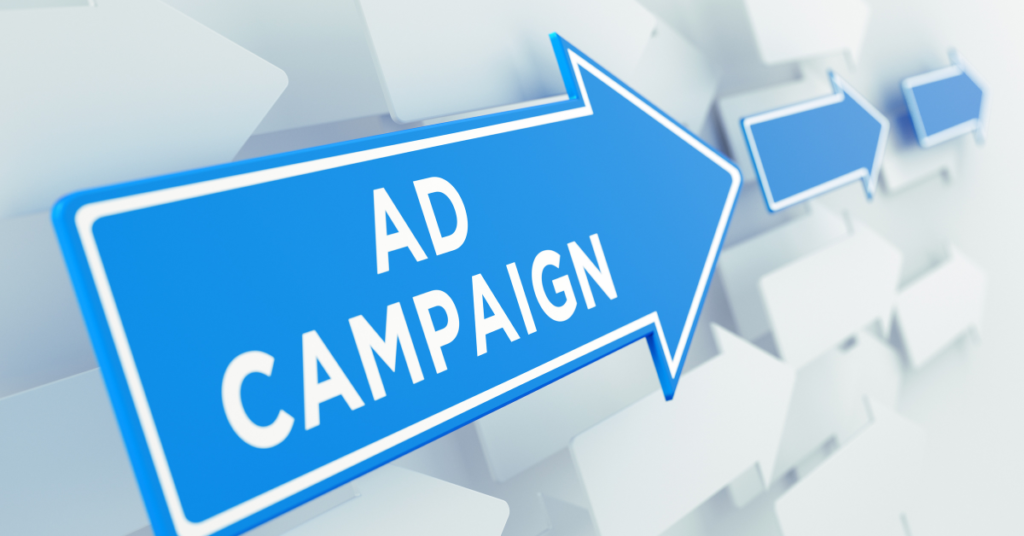Business Advertising as a tool
Business Advertising is a powerful tool used by businesses to promote their products, services, or ideas to their target audience. It is a form of marketing communication that aims to influence the behavior of potential customers. Advertising can be carried out through various mediums, such as print, television, radio, outdoor, and digital.
What is Business Advertising?

Advertising can be defined as the practice of promoting a product, service, or idea through various mediums. It is a form of communication that aims to persuade potential customers to purchase a product or service. Advertising is usually a paid form of promotion, and it is carried out by businesses to create awareness, generate leads, and boost their sales.
Advertising can take different forms, depending on the medium used. For example, print advertising can involve placing advertisements in magazines, newspapers, or brochures. Television advertising can involve creating commercials that are aired on television channels. Radio advertising can involve creating audio ads that are played on radio stations.
Outdoor advertising can involve placing billboards, banners, or posters in public places. Digital advertising can involve using various online platforms, such as social media, search engines, or websites, to promote products or services.
What is the Importance of Business advertising?
Advertising is an essential part of any marketing strategy. It helps businesses to reach out to potential customers and inform them about their products or services. Advertising is also crucial for building brand awareness and establishing brand identity. By creating a strong brand image, businesses can differentiate themselves from their competitors and create a loyal customer base.
Furthermore, advertising can help businesses to generate leads and sales. By targeting specific audiences and creating compelling messages, businesses can persuade potential customers to purchase their products or services.
Advertising is also an effective tool for creating a competitive edge. By keeping up with the latest trends and changes in the market, businesses can stay ahead of their competitors and maintain their position in the industry.
In conclusion, advertising plays a vital role in the success of any business. It helps to create awareness, build brand identity, generate leads and sales, and provide a competitive edge.
However, businesses must also ensure that their advertising messages are truthful, ethical, and respectful of their audience. By doing so, they can build trust and credibility with their customers, which can lead to long-term success.
Importance of Business Advertising

Advertising is an essential tool for businesses to reach out to their target audience and achieve their marketing objectives. The objectives of advertising can vary depending on the business’s needs, but some of the common objectives are:
A. Creating awareness
One of the primary objectives of advertising is to create awareness about a product, service, or idea. By creating awareness, businesses can inform potential customers about their offerings and generate interest. Advertising can help businesses to reach out to a broader audience and create brand recognition.
B. Building brand image
Another objective of advertising is to build a strong brand image. By using various advertising techniques, businesses can establish a unique brand identity and differentiate themselves from their competitors. A strong brand image can help businesses to develop customer loyalty and create a long-term relationship with their customers.
C. Generating leads and sales
Advertising can also help businesses to generate leads and sales. By creating compelling messages and targeting specific audiences, businesses can persuade potential customers to purchase their products or services. Advertising can also be used to promote sales and discounts to attract more customers.
D. Developing customer loyalty
Advertising can help businesses to develop customer loyalty by creating a positive image of the brand. By using emotional appeal and highlighting the benefits of their products or services, businesses can create a connection with their customers. Advertising can also be used to communicate with existing customers and provide them with information about new products or services.
In conclusion, the objectives of advertising can vary depending on the business’s needs. However, the primary objectives are creating awareness, building brand image, generating leads and sales, and developing customer loyalty. By using various advertising techniques and mediums, businesses can achieve their marketing objectives and reach out to their target audience.
4 Types of Business Advertising

Advertising is a key component of any successful marketing strategy. It is a way for businesses to communicate with their target audience and promote their products or services. There are various types of advertising that businesses can use, each with its own unique advantages and disadvantages. In this article, we will explore the different types of advertising.
A. Print Advertising
Print advertising is one of the oldest forms of advertising. It includes advertisements that are printed in newspapers, magazines, brochures, and other printed materials. Print advertising is a great way to reach a local audience, as well as a targeted audience interested in specific topics. However, it can be costly and may not reach as broad of an audience as other forms of advertising.
B. Broadcast Advertising
Broadcast advertising includes television and radio advertisements. This form of advertising is great for reaching a large audience. Television advertisements in particular can be very effective, as they can use visuals and audio to capture the attention of viewers. However, broadcast advertising can be very expensive, especially during peak viewing times.
C. Outdoor Advertising
Outdoor advertising includes billboards, posters, and other advertisements that are placed in public spaces. This form of advertising is great for reaching a local audience, as well as a broad audience that is on the go. Outdoor advertising is also very effective at creating brand awareness. However, it can be costly and may not be as targeted as other forms of advertising.
D. Digital Advertising
Digital advertising includes advertisements that are displayed on websites, social media, and other digital platforms. This form of advertising is great for reaching a targeted audience, as businesses can use data to target their advertisements to specific demographics. Digital advertising is also very cost-effective, as businesses can set their own budgets and only pay for clicks or impressions. However, digital advertising can be very competitive, and businesses need to stay up-to-date on the latest trends and technologies to stay ahead of the competition.
In conclusion, there are various types of advertising that businesses can use to reach their target audience and achieve their marketing objectives. Print advertising, broadcast advertising, outdoor advertising, and digital advertising each have their own unique advantages and disadvantages. It is important for businesses to choose the right type of advertising for their specific needs and budget.
9 Business Advertising Tips for Creating Successful Ads

Creating successful advertisements is essential for businesses to achieve their marketing objectives. Whether you are creating print, broadcast, outdoor, or digital ads, there are several tips that can help you create effective and engaging ads. In this article, we will explore nine advertising tips for creating successful ads.
A. Identify your target audience
The first step in creating successful ads is to identify your target audience. Your target audience is the group of people who are most likely to be interested in your product or service. Once you have identified your target audience, you can tailor your ad to their specific needs and preferences.
B. Highlight the benefits of your product or service
Your ad should clearly communicate the benefits of your product or service. This means highlighting how your product or service can solve a problem or meet a need for your target audience. By highlighting the benefits, you can create interest and motivate your audience to take action.
C. Use clear and concise language
Your ad should use clear and concise language that is easy to understand. Avoid using jargon or technical terms that may confuse your audience. Instead, use simple language that is easy to read and understand.
D. Create a compelling call-to-action
Your ad should include a compelling call-to-action that motivates your audience to take action. This could be visiting your website, making a purchase, or contacting your business. A strong call-to-action can increase the effectiveness of your ad and drive conversions.
E. Use eye-catching visuals
Whether you are creating print, broadcast, outdoor, or digital ads, visuals are an important component of your ad. Use eye-catching visuals that capture the attention of your audience and communicate your message effectively.
F. Use emotional appeal
Emotions can be a powerful motivator for action. Use emotional appeal in your ad to connect with your audience on a deeper level. This could be through storytelling, humor, or other emotional triggers that resonate with your target audience.
G. Be consistent with your branding
Consistency is key when it comes to branding. Your ad should be consistent with your branding in terms of colors, fonts, and messaging. This helps to build brand recognition and trust with your audience.
H. Test and measure your ads
Testing and measuring your ads is essential for determining their effectiveness. Use A/B testing to test different versions of your ad and measure the results. This can help you to optimize your ad and improve its performance.
I. Stay up-to-date with trends and changes
The advertising landscape is constantly evolving. It is important to stay up-to-date with the latest trends and changes in the industry. This can help you to stay ahead of the competition and create effective ads that resonate with your target audience.
Creating successful ads requires careful planning and execution. By following these nine advertising tips, you can create effective and engaging ads that drive conversions and achieve your marketing objectives. Remember to always identify your target audience, highlight the benefits of your product or service, use clear and concise language, create a compelling call-to-action, use eye-catching visuals, use emotional appeal, be consistent with your branding, test and measure your ads, and stay up-to-date with trends and changes.
FAQs on Business Advertising

Q: What is advertising?
A: Advertising is a form of marketing communication that aims to promote a product, service, or idea through various channels.
Q: What are the different types of advertising?
A: The different types of advertising include print, television, radio, outdoor, and digital.
Q: Why is advertising important?
A: Advertising is important because it helps businesses to reach out to potential customers, create brand awareness, generate leads and sales, and establish a competitive edge.
Q: How does advertising work?
A: Advertising works by creating compelling messages and using various channels to reach out to potential customers. By targeting specific audiences and creating emotional appeal, businesses can persuade potential customers to purchase their products or services.
Q: What are the objectives of advertising?
A: The objectives of advertising can vary depending on the business’s needs, but some of the common objectives are creating awareness, building brand image, generating leads and sales, and developing customer loyalty.
Q: What are some examples of advertising?
A: Examples of advertising include television commercials, print advertisements in magazines and newspapers, internet banner ads, billboards, and social media posts.
Q: How can businesses ensure that their advertising messages are ethical?
A: Businesses can ensure that their advertising messages are ethical by being truthful, respectful of their audience, and complying with advertising regulations and standards. They should also avoid making false claims or using deceptive tactics to promote their products or services.
Q: Can advertising be harmful?
A: Advertising can be harmful if it promotes unethical or harmful products or services, or if it uses manipulative or deceptive tactics to persuade potential customers. Therefore, businesses should ensure that their advertising messages are ethical and respectful of their audience.




